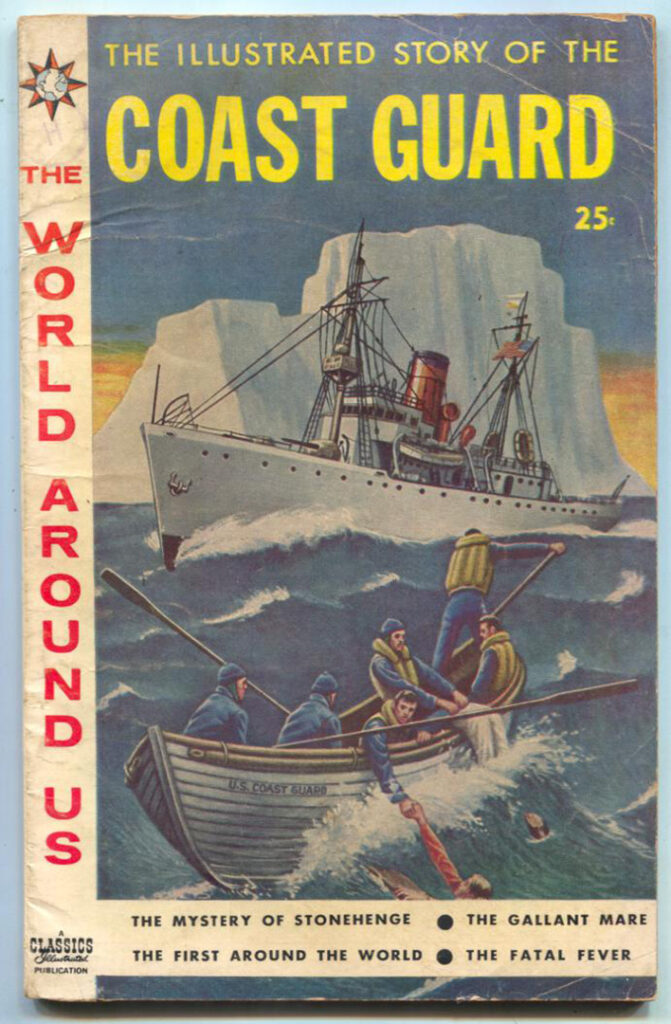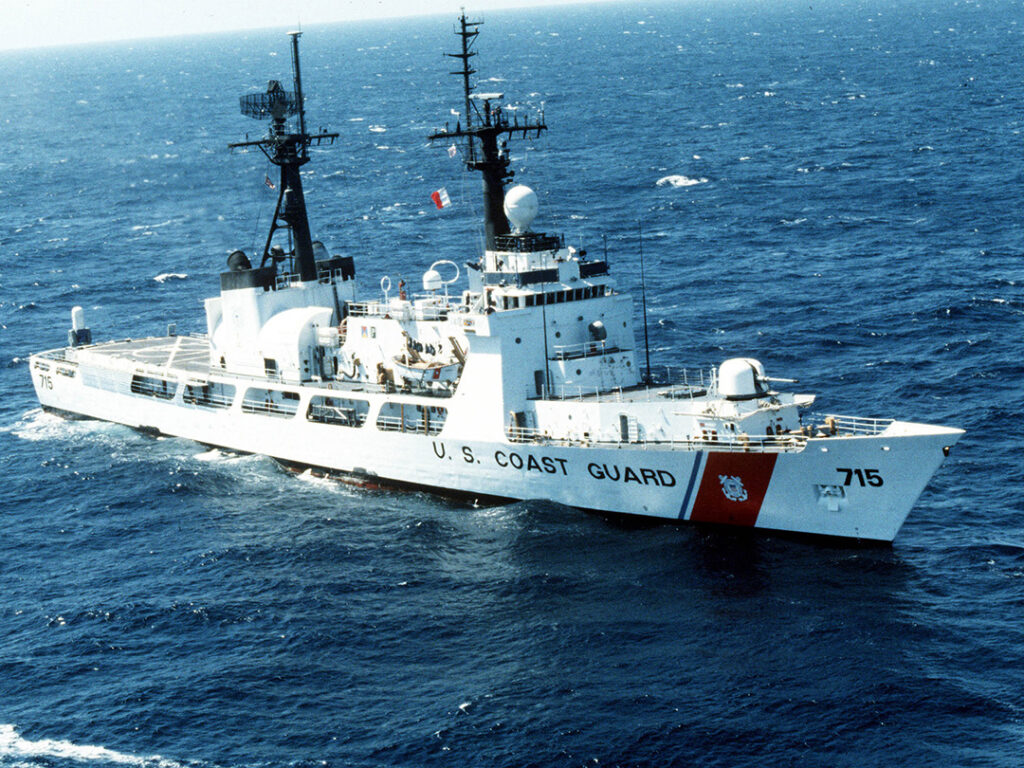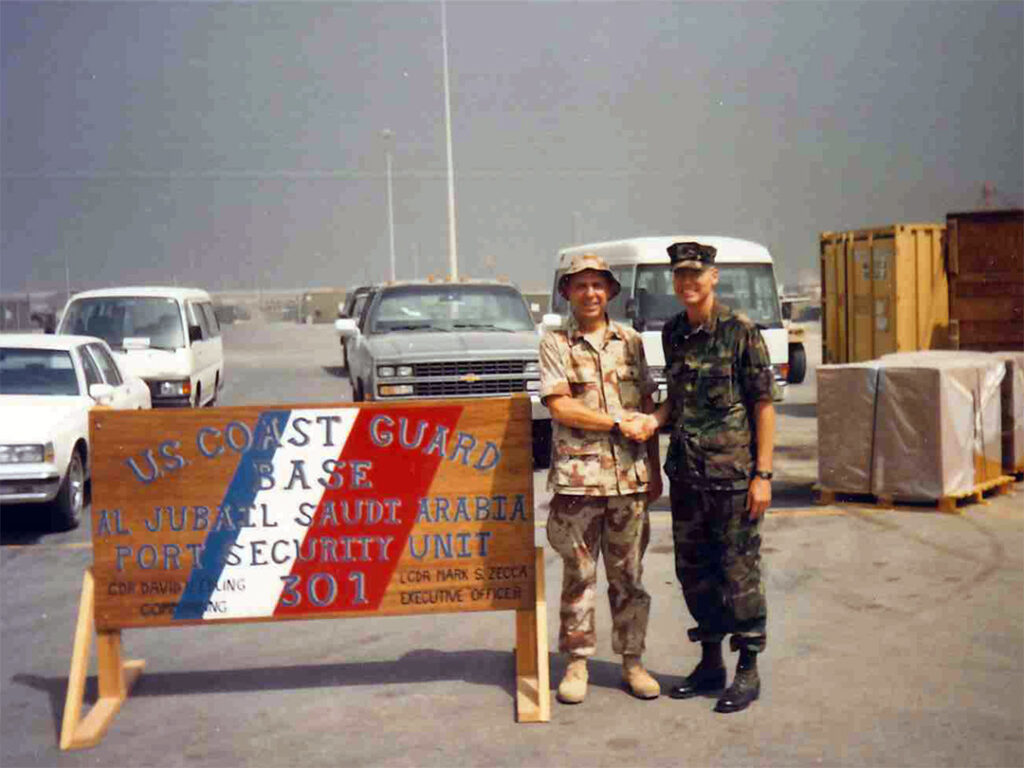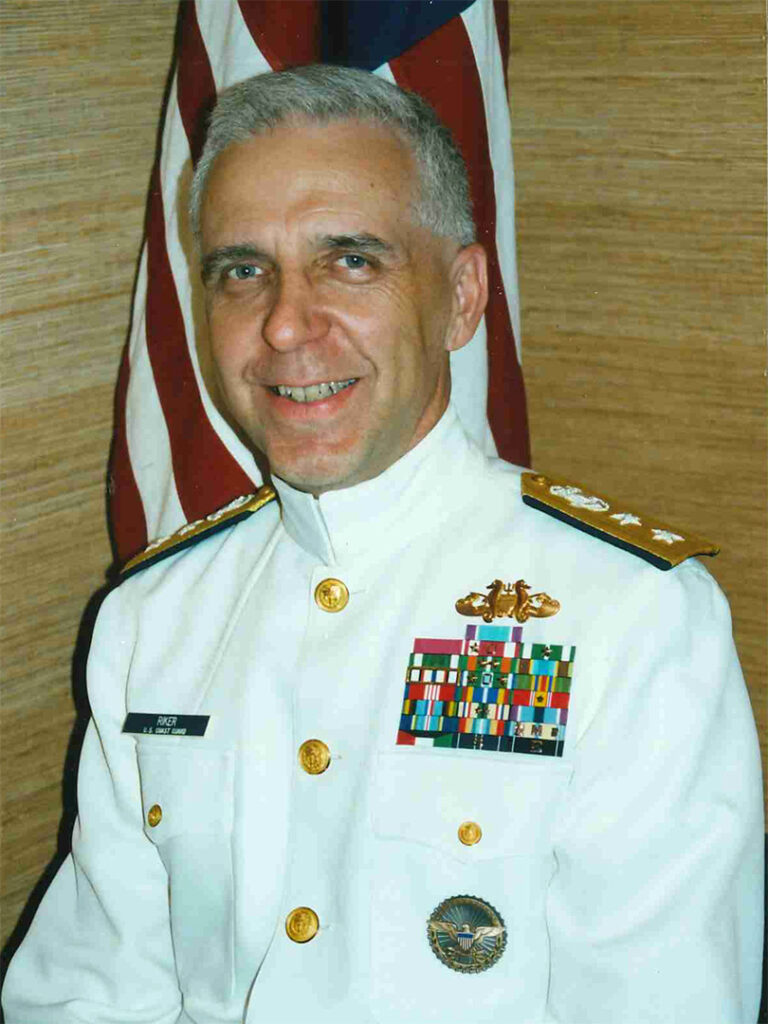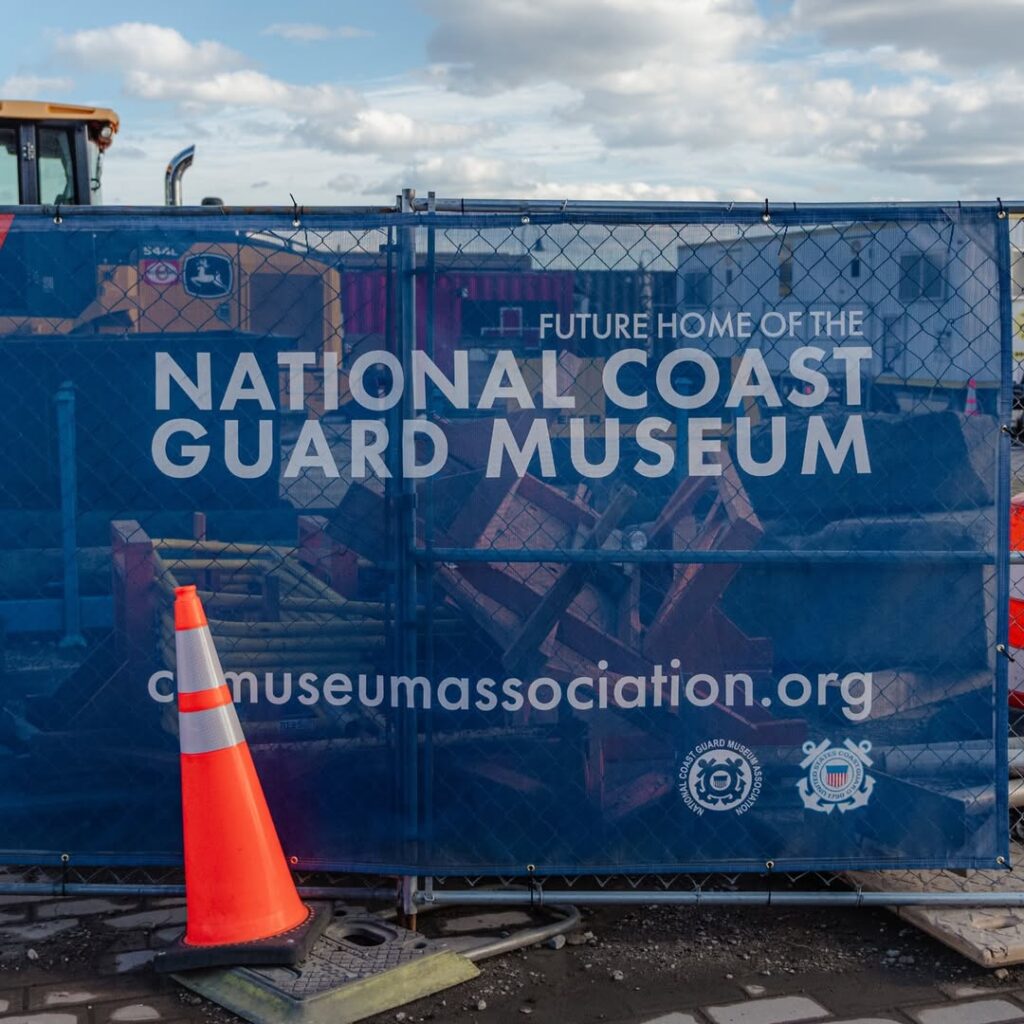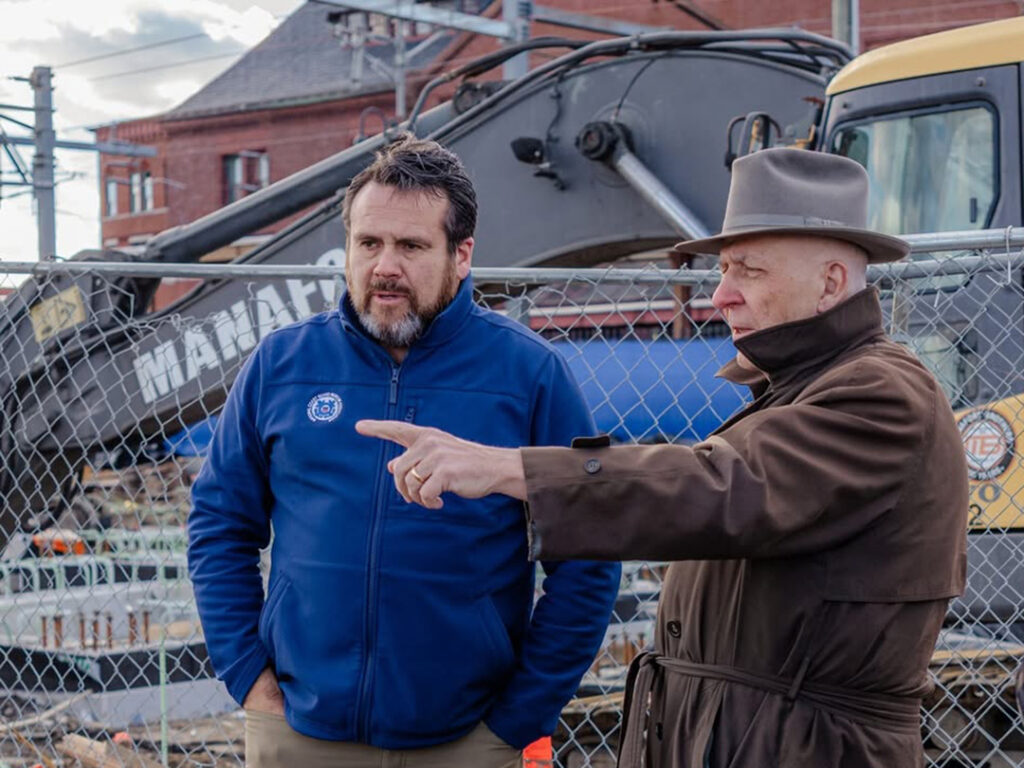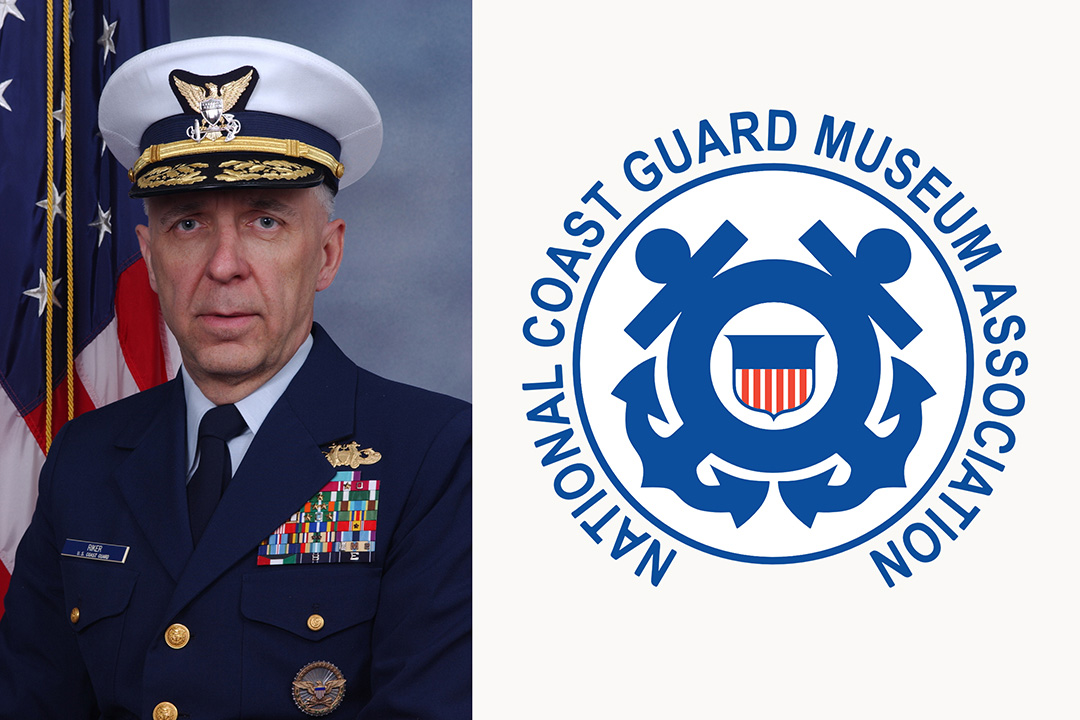
Rear Admiral Timothy Riker – Historian and strident supporter of the National U.S. Coast Guard Museum
Retired Rear Admiral Tim Riker (Baldwin Wallace ’70) is a history scholar who wants more people to know about the vital role the U.S. Coast Guard has played in protecting Americans on the waterways, lakes, and oceans in and around the country, and defending the Republic during war.
As Chairman of the Board of the Foundation for Coast Guard History, Riker has become an outspoken supporter of establishing the National U.S. Coast Guard Museum. The Coast Guard is currently the only branch of the service that does not have a national museum, but that will change in 2026 when the museum is scheduled to open in New London, Connecticut.
The Coast Guard seemed an “odd choice”
Asked why a guy from Ohio, a state with a somewhat limited coastline, was drawn to the Coast Guard Riker said, “When I joined the Coast Guard, I didn’t know how to swim, so it seems an odd choice.”
But Riker’s family was a salty group. He said, “A grandfather served in the Navy during WWI and my father was a Navy SeaBee in WWII. He served in the European Theater in the 69th Construction Battalion assigned to the Canadian First Army. I think it was the only naval organization that marched across Europe.”
Riker recalled the unlikely influence was his mother. As a youngster he loved comic books. He said, “My mother made sure I was reading good comic books. At one point she brought home the Classics Illustrated ‘History of the U.S. Coast Guard.’ And I thought ‘this would be great.’ I still have a copy.”
He said when he went to Baldwin Wallace. “I envisioned signing on to a Great Lakes freighter after college, because I really wasn’t sure what I wanted to do. But then the draft in 1969 forced a decision. The Coast Guard sounded like it was a great organization, so I joined.”
Riker enlisted in 1970 and after boot camp was assigned to the Coast Guard Cutter Hamilton. The ship was named in honor of Alexander Hamilton, the first U.S. Secretary of the Treasury, who is also considered the father of the U.S. Coast Guard.
During his tour on the Hamilton they worked side-by-side with the US Navy on anti-submarine tactics. He said in the Vietnam era, “Most men in officer training were interested in shore duty, but active sea duty was very important to me.”
“Make it so, Number One”
After officer training, Riker continued his active service and eventually earned the rank of Commander. When he was deployed to Desert Storm in 1991, Star Trek: The Next Generation was all the rage.
After a few calls identifying himself as ‘Commander Riker’, he said, “I would get silence… and then a typical irreverent response was, ‘Well, I’m Spock’.”
But “Number One” went on to have a highly distinguished career, reaching the rank of Rear Admiral. He served as Director of the U.S. Coast Guard Reserve, Chief of the Defense Operations Division for the Office of Operations and Law Enforcement, and Deputy Director of Coast Guard Intelligence and Criminal Investigations.
Supporting the Coast Guard Museum
Riker is personally invested in promoting the contributions of Coast Guard history and how it impacts Americans. He said, “There is no agency of the federal government that is closer to the American people in their day to day lives than the US Coast Guard.”
The Coast Guard:
• Is a military service at all times.
• Is the only service that can enforce civil law.
• Protects commerce by patrolling shipping lanes and enforcing against illegal activities.
• Is the most utilitarian Federal Agency, deployed domestically and worldwide.
• Works closely with the American people to ensure their safety.
As the Chair of the Foundation for Coast Guard History, Riker leads a volunteer group of dedicated historians who research and document Coast Guard history and support the preservation and promotion of their legacy.
Riker said, “I hope that anybody who comes to the museum is going to walk away saying, I didn’t realize how important the Coast Guard is to my family’s life.”
The National U.S. Coast Guard Museum is scheduled to open in 2026.
Staying in touch with brothers “not four years, but a lifetime”
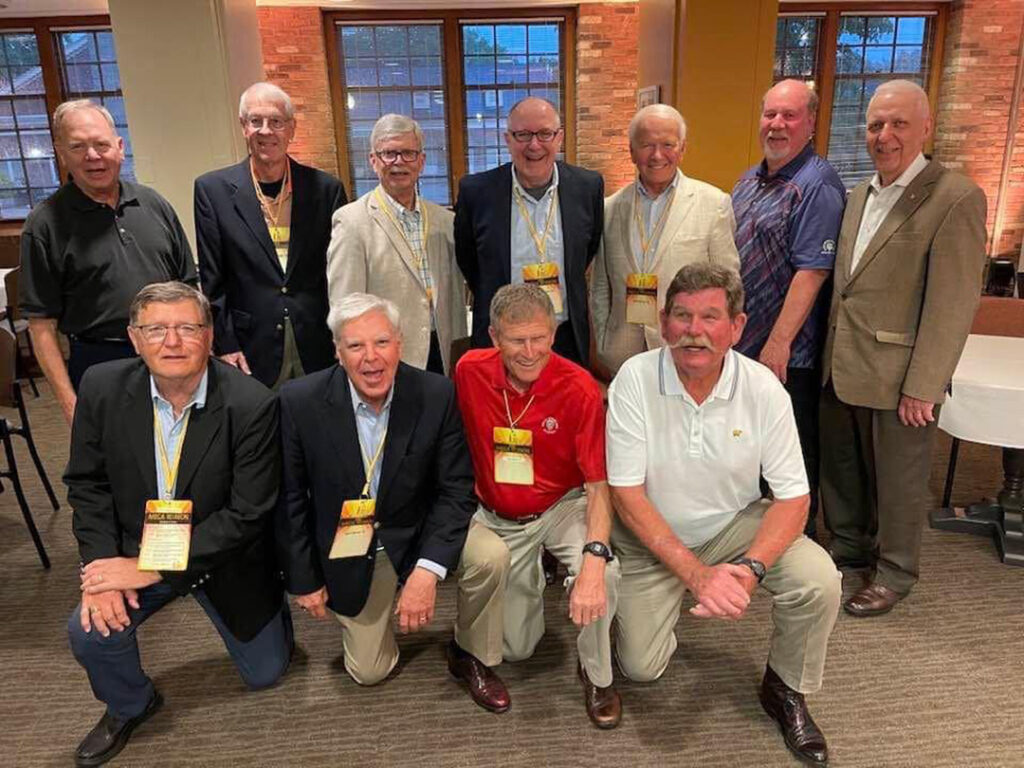
Riker said he was not initially interested in, “what I perceived as fraternity life.” But when he found that at Baldwin Wallace the pledge program was based on service to community he said, “That appealed to me, as well as fulfilling the philosophy and Creed of the fraternity.”
Over the years, Riker and his classmates have gotten together every year since 1971. They are a close-knit group of ten to twenty brothers and spouses who started out by attending each others’ weddings. When they had kids, they vacationed together. During the pandemic they did Zoom calls. They truly embody our motto.



